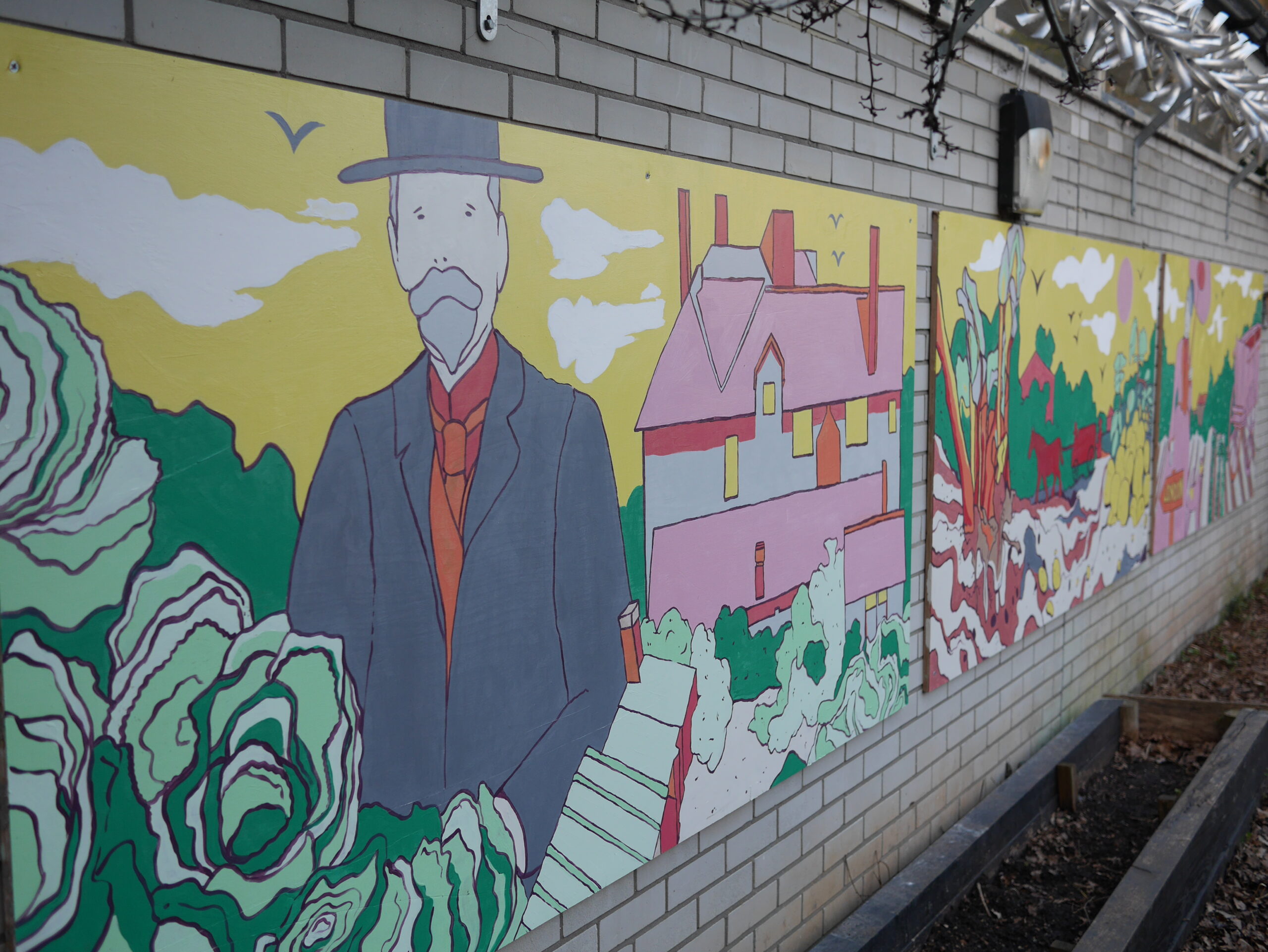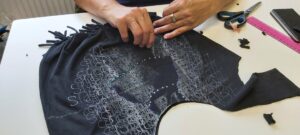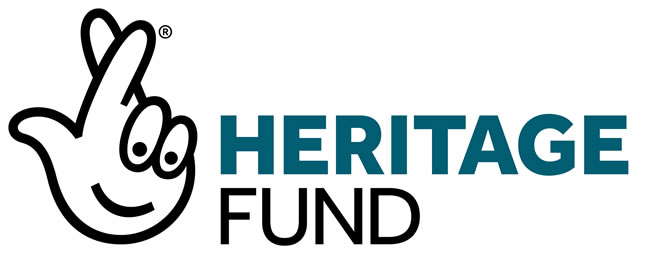
Interpreting the Fanns: Valence House
Valence House, and the wider landscape that surrounds it, has a long history of fruit and vegetable production. As once the largest manor estates in Dagenham, Valence House was able to produce everything it needed to survive and prosper – fruit, vegetables, plants and animal products. For centuries the preserve of Gentlemen farmers, it was the arrival of Thomas May in 1879 that turned the grounds at Valence House into a successful market garden, sending produce for sale at the London Markets. He even became famous for introducing commercial tomato growing to Dagenham.
It is this agricultural history that Valence House has tried to tell through its involvement with the Land of the Fanns project. Our involvement was based on three outputs: a public event celebrating Mr May and his tomato growing, a refurbishment of our existing herb garden to better interpret the historic use of herbs and the creation of a mural telling Mr May’s story.
Mr May’s Green Day was planned as a celebration of growing, healthy living and reuse. We had intended to send a packet of tomato seeds to every primary school child in the borough, with instructions on how to successfully grow them. The children would then show their tomatoes and have them judged in various categories at the event. The event was planned for the summer of 2020, and of course, the Coronavirus pandemic soon put paid to those plans. Instead, during lockdown we encouraged our followers on social media to grow their own vegetables by sending out free packs of garden or patio seed packs to those that requested them. We also posted online activities for people to make their own decorative seed pots. This was hugely successful, with seeds being sent as far away as Manchester. If Covid-19 taught us anything, it was how to be adaptable!
In 2021 we held a WWII Dig for Victory day, merging our annual re-enactment event with Mr May’s Green Day. We tried to keep to the ethos of the original Mr May’s Green Day we had planned, focussing on growing vegetables and reuse. We gave tours of our Dig for Victory garden, held Make-do-and-Mend workshops, made mini dig for victory gardens, had lindy bop performances and were visited by the Home Front Bus.
We have had a formal herb garden since 1993, but the original layout of the herb beds didn’t allow for easy interpretation. As part of this project, our Heritage Ranger redesigned the beds along four themes: herbs for medicine, herbs for cooking, herbs for dyeing and herbs for practical use. Interpretation panels were designed with four key characters from Valence House’s history providing information on how some of the  herbs were used during their period of life. Those characters are Agnes de Valence (medieval), Susanna Fanshawe (Elizabethan), Thomas Henshawe (Stuart) and Thomas May (Victorian).
herbs were used during their period of life. Those characters are Agnes de Valence (medieval), Susanna Fanshawe (Elizabethan), Thomas Henshawe (Stuart) and Thomas May (Victorian).
Our final output for the project was the creation of Mr May’s Mural. We held workshops with local families and pupils from Valence Primary School to find out what elements of Mr May’s gardens children found the most interesting. Mural artist Jake Attewell then used the drawings from these workshops as inspiration for the final artwork. A/Level art students from Robert Clack School worked with Jake to paint the mural, learning how to upscale an A4 print onto a wall. The triptych mural tells the story of Mr May’s fruit and vegetable business at Valence House, from growing, to harvesting, to selling at market.
The Land of the Fanns project has been a fantastic opportunity for us to develop the interpretation of our landscape, expanding the ways in which we portray the history of the house and its past residents.
Leeanne Westwood, Museum Curator



